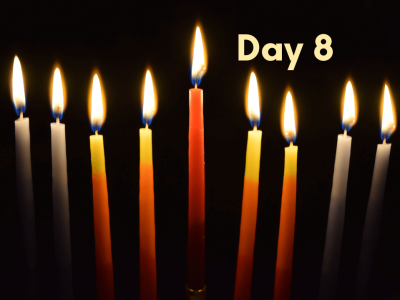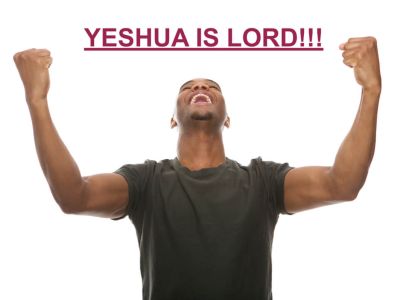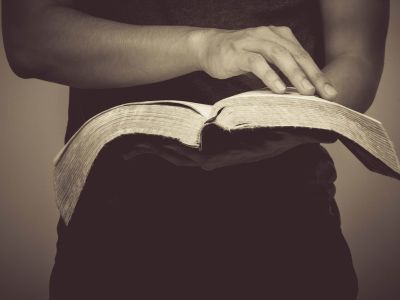L.E.A.D.- Bread to Power
L.E.A.D.- Bread to Power
Passover Bread to Pentecost Power
The spiritual journey from Passover to Shavuot (or Pentecost as it’s also known) can, quite amazingly, be compared to the process of making bread. This is not only because the instructions given for these appointed times in scripture are centered around the baking of specific types of bread, but even down to what these feasts represent to us as people of God, as members of Israel, and as followers of Messiah. Beginning with the ‘unfinished’ unleavened bread of Passover, concluding with the two ‘finished’ leavened loaves of Shavuot and with a lot of counting and patience in between, this time can be compared to our own lives from our salvation to our development of full maturity in Christ.
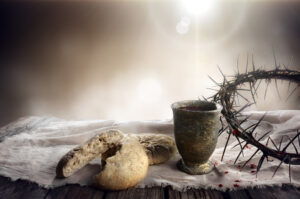
The reason Passover is centered around unleavened bread as opposed to regular leavened bread is that at the time of the Exodus, the Israelites left Egypt in such haste that there was no time to finish the process of making bread, their dough being wrapped up and packed before it had time to rise with the leaven (Exodus 12:33-34). There are many things we can draw from this, and a large part of the Passover celebrations are focused on what leaven signifies on a spiritual level, namely pride, arrogance, and those things that lead us to sin through being ‘puffed up and how we get rid of those things from our lives.
So, if during Passover, leaven signifies things that we need to get rid of, why does Shavuot center around leavened bread? On a literal level, it is commanded in Torah that the Israelites present two loaves of leavened bread as a wave offering before YHWH during Shavuot (Leviticus 23:17). Still, more importantly, this offering signifies the two kingdoms of Israel, fully developed and mature, presented together before God in the hands of the High Priest. This is linked to the imagery of Ezekiel 37:15-17, which gives the picture of the Messiah holding two sticks, one in each hand, one representing the House of Judah (the ‘southern kingdom’) and the other representing the House of Ephraim (the ‘northern kingdom’), which He then joins together to become as one to represent His uniting of Israel. The leavened bread of Shavuot represents Israel, unified and matured with the good leaven of the Messiah, completing what was started by Moses (Luke 13:20-21). The Torah helps us begin removing sin and temptation from our physical lives. Still, Yeshua, the Bread of Life, makes us complete and spiritually mature and gives us eternal life (John 6:35,51).
It is not just the Spring Feasts that are significant, but the time in between. Between Passover and Shavuot is the fifty-day ‘Omer count’, which must be counted daily between these Appointed Times. To Israel, an observation not only marked the time between the First Fruits offering of the fully grown barley harvest and the first-fruits offering of the fully grown wheat harvest (Leviticus 23:15-17, Deuteronomy 16:9-12), but it was also a remembrance of the time between Israel’s escape from Egypt and the giving of the Torah at Mount Sinai. For followers of the Messiah, it has the further significance of the time between Yeshua’s death and resurrection and the giving of the Spirit through the Apostles, as detailed in Acts 2:1-47. Thus, it is not simply about counting days, and waiting for the bread to rise with the leaven of spiritual maturity, but about being mindful of our deliverance and what we must do every day for our walk with God.
To benefit from this time during the Omer count, it can be valuable to take the time on each of the fifty days as individuals and as families to express gratitude to God for the things He has done in our lives. Even if only one blessing, or at least something to be thankful for, is written down each day, at the end of the process, we will each have a list of fifty blessings to remind us of how Wonderful God really is and how much He does for us in our lives. Further to this daily observance, because this is a count of the days between the Exodus and what we call the giving of the Torah, not the receiving of it, on each of the seven Shabbats that are counted during this time, each person should think of something they can do for someone else, something that they wouldn’t normally do. This sacrifice of time and effort demonstrates an understanding that the essence of our lives as God’s people is ultimately love (Deuteronomy 6:4-5, Mark 12:28-34) and that the essential nature of love is to give, not take, something deeply programmed into the Hebraic mode of thought. This is how we show that we are following the example of Messiah Yeshua and demonstrate the active development of that spiritual maturity in our lives, represented by the leavened bread at Shavuot.
This picture of the process of making bread, further to what it means for our lives, also represents Messiah’s work, 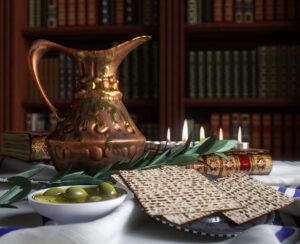 Passover’s unleavened bread symbolizing His first coming, and Shavuot’s leavened bread symbolizing His return. The unleavened bread of Passover is like the beginning of the process: Yeshua came first as a humble servant, showing how we must guide others to God by lowering ourselves to elevate and serve others. Messiah’s work on the cross was just the beginning of the work of laying the foundations for the eternal Kingdom, but, like the picture of the two leavened loaves held together in the hands of the High Priest, the full potential and complete fulfillment of the ‘Baker’s’ work will only come when He returns as King in ALL of His glory, to reign over a unified and fully matured Kingdom of God’s people.
Passover’s unleavened bread symbolizing His first coming, and Shavuot’s leavened bread symbolizing His return. The unleavened bread of Passover is like the beginning of the process: Yeshua came first as a humble servant, showing how we must guide others to God by lowering ourselves to elevate and serve others. Messiah’s work on the cross was just the beginning of the work of laying the foundations for the eternal Kingdom, but, like the picture of the two leavened loaves held together in the hands of the High Priest, the full potential and complete fulfillment of the ‘Baker’s’ work will only come when He returns as King in ALL of His glory, to reign over a unified and fully matured Kingdom of God’s people.
As disciples of Yeshua and members of Israel, we can learn so much about the Messiah’s work (past, present, and future) and what it means to be part of this ‘Holy nation of royal priests’ from the ordinances of the Feasts of YHWH, but this is supposed to be practical understanding, not just academic. We need to apply the lessons we learn from these appointed times every day in how we live as God’s people and as witnesses of His Word to others. If we are not bearing the fruits of living faith, we are not genuinely fulfilling our roles as emissaries of the Gospel (James 2:14-26). If we partake of the Bread of Life, our Master Yeshua, then His bread is our bread too, making us that bread of life to the rest of the world (1 Corinthians 10:16-17). Never forget that Messiah’s work is our work too, so to represent our King correctly to those who need him and thus fulfill our roles as emissaries of the coming eternal Kingdom, we must be fully mature, risen with that good leaven, and demonstrate the fruits of the Spirit, but to attain that it takes time, effort, obedience and ultimately, the patience of someone who knows the perfection and magnificence of what is to come (James 1:2-4).
Shalom,
Jim Staley





